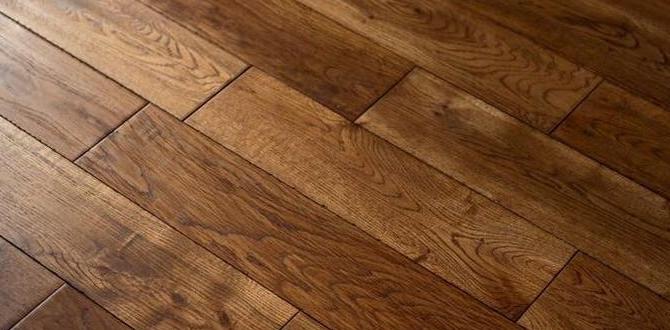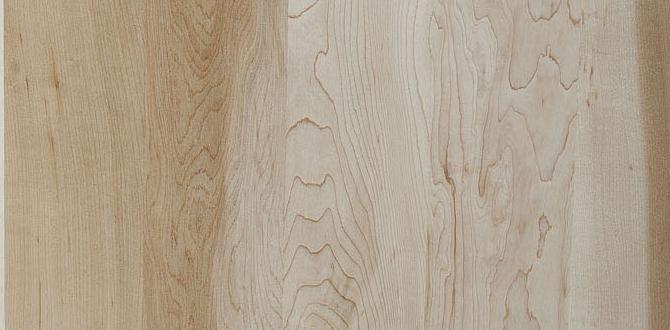Quick Summary: Master framing walls with a nail gun using these genius tips! Learn proper fastener selection, safe operation, efficient techniques, and common pitfalls to avoid. This guide ensures your DIY projects are faster, stronger, and less frustrating.
Hey DIYer! So you’re ready to frame some walls, huh? That’s fantastic! It might seem a bit daunting at first, especially if you’re new to power tools. But here’s a little secret: a nail gun can make this whole process feel like magic. No more countless hammer swings! We’re going to break down exactly how to use your nail gun like a pro for framing. You’ll be building sturdy walls in no time. Let’s get those studs standing tall!
Table of Contents
Why a Nail Gun is Your New Best Friend for Framing
Let’s talk about why a nail gun completely changes the game when you’re framing walls. Traditionally, building a stud wall meant picking up a hammer and driving thousands of nails, one by one. This is slow, physically tiring, and can lead to bent nails and sore thumbs. A framing nailer, on the other hand, fires nails with incredible speed and precision. This dramatically cuts down your project time, reduces fatigue, and results in stronger joints. It’s an investment that pays off big time in efficiency and the quality of your build.
Types of Nail Guns for Framing
Before we dive into the “how-to,” it’s good to know which type of nail gun is best suited for framing. The most common ones you’ll encounter are:
- Pneumatic Nail Guns: These are the workhorses of the construction world. They require an air compressor to operate. While they need an extra piece of equipment, they are powerful, reliable, and often the most budget-friendly for the initial purchase.
- Cordless Nail Guns: These are battery-powered and offer great portability. They are convenient as you don’t need to worry about air hoses or finding an outlet. Some high-demand framing tasks might drain the battery faster than a compressor can keep up, but for most DIY projects, they are fantastic.
- Gas/Fuel Cell Nail Guns: These use a combination of a battery and a fuel cell (like propane) to drive nails. They offer excellent power and portability but can be more expensive to operate due to the fuel cells.
For framing, you’ll generally want a nailer that drives nails between 2 and 3.5 inches long. These are often labeled as “framing nailers.”
Essential Tools and Materials
Beyond your nail gun, there are a few other things you’ll need to have on hand to frame walls smoothly. Think of this as your packing list:
- Your chosen Framing Nail Gun: (Pneumatic, Cordless, or Gas)
- Air Compressor and Hose (if using pneumatic): Make sure your compressor has enough CFM (Cubic Feet per Minute) to keep up with your nailer.
- Framing Nails: These need to be the right size and type for your nailer. Framing nails typically come in “collated” strips or coils. Most framing nailers use either 21-degree or 30-degree collation. Always check your nail gun’s manual for the correct nail type and angle!
- Safety Glasses: Non-negotiable. Always protect your eyes!
- Hearing Protection: Nail guns are loud.
- Work Gloves: Protect your hands.
- Measuring Tape: For precise measurements.
- Pencil: For marking.
- Speed Square or Combination Square: For marking accurate cuts and square lines.
- Circular Saw or Miter Saw: For cutting your lumber to size.
- Level (2-foot and 4-foot or 6-foot): To ensure your walls are perfectly plumb (vertical).
- Carpenter’s Level or Framing Square: To check for plumb and square.
- Chalk Line: For marking long, straight lines on larger projects.
- Wood (Lumber): Typically 2x4s for studs, top plates, and sole plates. You might also use 2x6s or other sizes depending on your project.
- Optional: Lumber Crayon: For marking lumber in dusty or wet conditions.
Safety First! Genius Tips for Using Your Nail Gun
This is where we get serious about staying safe. Nail guns are powerful tools and, if misused, can cause serious injury. Think of these as commandments for using your nail gun:
- Always Wear Safety Glasses: This is the absolute golden rule. Always, always, always wear them. Not just when firing, but any time you’re around the nail gun.
- Understand Your Nail Gun’s Safety Features: Most modern nailers have a “contact trip” or “sequential trip” safety mechanism.
- Contact Trip: The nailer fires when the safety nose is pressed against the material AND the trigger is pulled. This is faster but requires more caution.
- Sequential Trip: You must release the trigger, then release the safety nose EACH time you want to fire a nail. This is slower but much safer, especially for beginners. Check your manual to understand your specific model and switch it to sequential mode if available and you’re learning.
- Never Point the Nail Gun at Yourself or Others: Treat it like a loaded firearm. Even when it’s not connected to air or has no battery, assume it’s ready to fire.
- Keep Your Fingers Away from the Trigger and Nose: When not actively firing a nail, keep your finger off the trigger and the nose of the gun away from any surface.
- Disconnect Power When Not in Use or Loading: For pneumatic nailers, disconnect the air hose. For cordless, remove the battery.
- Be Aware of Your Surroundings: Make sure no one is behind the surface you are nailing into. Nails can sometimes over-penetrate unexpectedly.
- Use the Correct Nails: Using the wrong size or type of nail can cause jams or damage the tool.
- Don’t Overuse in Awkward Positions: Try to position yourself so you can see clearly and hold the nail gun securely. Avoid firing nails at extreme angles or when unbalanced.
For more in-depth safety guidelines, the Occupational Safety and Health Administration (OSHA) provides excellent resources on power tool safety.
Step-by-Step: Framing a Wall with Your Nail Gun
Alright, let’s get down to business! Framing a simple wall involves creating a rectangular or square frame with vertical studs inside. Here’s how to use your nail gun to do it efficiently.
Step 1: Measure and Cut Your Lumber
This is the foundation of your wall. Accuracy here prevents headaches later.
- Measure Your Space: Determine the exact length and height of the wall you need to build. Remember to subtract the thickness of your top and sole plates from the total height.
- Cut the Sole Plate and Top Plate: Cut two pieces of lumber (usually 2x4s) to the exact length of your wall. These will run horizontally along the floor and ceiling.
- Cut the Studs: The studs are the vertical pieces. For a standard 8-foot ceiling height, you’ll typically need studs around 92 5/8 inches long (this accounts for the 1.5-inch thickness of the top and sole plates, 3/4-inch each). Double-check this calculation for your specific ceiling height. Standard stud spacing is 16 inches on center, but you might also use 24 inches on center.
- Cut Cripple Studs and Blocking (if needed): These are shorter pieces used above windows/doors or for added stability.
Step 2: Assemble the Wall Frame on the Floor
It’s much easier to build your wall frame flat on the floor or a large workbench before lifting it into place.
- Lay Out the Sole Plate and Top Plate: Place the two longer pieces parallel to each other on your work surface, spaced apart by the length of your studs.
- Position Your First Stud: Take one of your cut studs. Place it vertically between the sole plate and top plate, flush with one end. Ensure the edges of the stud are perfectly aligned with the ends of the plates.
- Nail the Stud: This is where the nail gun shines!
- Load your nail gun according to the manufacturer’s instructions.
- Ensure the nail gun’s safety tip is pressed firmly against the lumber.
- Aim your nail gun so the nails will go straight through the plate and into the stud. You’ll typically use two nails per end of each stud.
- Press the trigger. Zap! One nail is in.
- Fire the second nail.
Make sure the nails are driven straight. If a nail goes in crooked, don’t try to wrestle it out with the nail gun; you could damage the tool or injure yourself. Use a hammer and pry bar to remove it.
- Mark and Position Remaining Studs: Measure and mark 16 inches (or 24 inches) on center from the edge of the first stud. Place your next stud at this mark and nail it in place, again using two nails at each end. You’ll often start by nailing the end studs, then mark and nail the interior studs. This is often called “16-on-center” framing.
- Add Any Additional Framing: Frame out any window or door openings with headers, king studs, and jack studs, and add any necessary blocking. For headers, you’ll usually double up 2x material with plywood or 1/2-inch OSB in between to create a strong beam.
A helpful tip is to use a framing square or a pre-made 16-inch on-center layout stick to quickly mark your stud locations.
Step 3: Squaring the Frame
Before you lift your wall, it’s crucial to make sure it’s square. An out-of-square frame can cause all sorts of problems down the line, including doors and windows that don’t fit properly and drywall that looks uneven.
- Measure Diagonals: Measure from one corner of the frame to the opposite corner. Then, measure the other diagonal.
- Adjust if Necessary: If the diagonal measurements are not exactly the same, your frame is not square. Gently push or pull on the corners to adjust the frame until the diagonals match.
- Secure the Squareness: Once square, you might want to add a diagonal brace on the back side of the frame temporarily to hold its shape, especially if you’ll be moving the wall significantly.
Step 4: Raising and Securing the Wall
This is often the most physically demanding part, and it’s helpful to have a second person.
- Position the Wall: Carefully lift the framed wall into its final position against the sole plate on the floor and the top plate on the ceiling.
- Plumb the Wall: Use your level to ensure the studs are perfectly vertical (plumb). You might need to temporarily brace the wall in place with some scrap lumber to hold it plumb.
- Nail to the Floor and Ceiling Plates:
- Load your nail gun.
- Place the nail gun nose against the top plate and drive nails down into the ceiling joist or top plate below. Use plenty of nails, typically spaced about 16-24 inches apart.
- Do the same for the sole plate, ensuring you nail into the floor joists or concrete subfloor (if applicable, using appropriate concrete nails or anchors if needed – though typically for wood framing, you’re nailing into wood subflooring and floor joists).
- Secure to Adjacent Walls: If your new wall is connecting to an existing wall, use your nail gun to nail the end studs into the studs of the existing wall.
Nail Gun Depth Adjustment: A Genius Trick!
One of the smartest features on most framing nailers is the depth adjustment. This allows you to set how deep the nail drives into the wood. Not having this set correctly is a common beginner mistake.
Here’s how to use it:
- Too Shallow: If your nails are sticking out, they won’t hold the joint securely. Increase the depth setting (often a dial or lever on the nailer).
- Too Deep: If your nails are sinking too far in, they can split the wood or be difficult to cover with drywall. Decrease the depth setting.
- Just Right: You want the nail head to be slightly below the surface of the wood, but not so deep that it crushes the wood fibers significantly. This provides a clean surface for drywall and a strong hold.
Pro Tip: Always test your depth setting on a scrap piece of lumber that matches the material you’re actually using. Adjust the depth until you get a perfect nail set.
Common Mistakes and How to Avoid Them
Even with the best intentions, you might run into a few snags. Here are some common framing mistakes and how your nail gun knowledge can help you avoid them:
| Common Mistake | How to Avoid It with Your Nail Gun |
|---|---|
| Out-of-Square Frame | Always measure diagonals and adjust before raising the wall. Use temporary bracing if needed. |
| Nails Not Fully Driven (Sticking Out) | Adjust nail gun depth setting to penetrate fully. Ensure you’re applying enough pressure with the nailer. |
| Nails Driven Too Deep (Splitting Wood) | Adjust nail gun depth setting. Avoid firing nails too close to the end of a board. |
| Bent or Crooked Nails | Ensure you’re using the correct nails for your gun. Apply consistent, straight pressure and avoid nailing into knots or very hard wood at sharp angles. |
| Over-penetration (Nails Going Through Substrate) | Be aware of what’s behind your framing. Know the length of your nails. Avoid over-driving nails in thin materials. |
| Jammed Nail Gun | Use the correct nails. Don’t force nails. Refer to your nail gun manual for clearing jams. Often, jams occur when not enough pressure is applied or if mismatched nails are used. |
| Incorrect Stud Spacing | Use a tape measure, layout stick, or chalk line to accurately mark stud positions before nailing. |
Troubleshooting Your Nail Gun During Framing
Even the best tools can act up. Here are a few common nail gun issues during framing and simple fixes.
- Nail Gun Not Firing:
- Pneumatic: Is it connected to air? Is the air pressure set correctly? Is the safety nose depressed? Is the trigger held down?
- Cordless/Gas: Is the battery charged? Is the fuel cell loaded correctly (if applicable)? Is the safety nose depressed?
- All Types: Check for jams. Ensure nails are loaded correctly.
- Nails Not Driving Fully:
- Adjust depth setting to a higher penetration.
- Increase air pressure (pneumatic).
- Ensure the nailer is pressed firmly against the wood.
- Check if you’re trying to drive into an exceptionally hard knot or a metal plate.
- Nail Gun Jamming Frequently:
- Are you using the correct nails (type, size, and collation angle)? This is the #1 cause.
- Is the magazine clean and free of debris?
- Are you applying enough consistent pressure with the tool?
- Try clearing the jam using the tool’s instructions.
Remember, your nail gun’s manual is your best friend for troubleshooting. Refer to it often.
FAQ: Your Framing Nail Gun Questions Answered
Q1: What is the best type of nail gun for framing?
For framing, a dedicated framing nail gun is best. It’s designed to drive larger nails (typically 2-3.5 inches) quickly and powerfully. Pneumatic framing nailers are often preferred for their power and reliability, but cordless options offer great convenience for DIYers.
Q2: What size nails should I use for framing walls?
For standard 2×4 framing, 3-inch (8d) or 3.25-inch (10d) nails are common. The exact size depends on your nailer and local building codes. Always ensure they are designed for framing and


